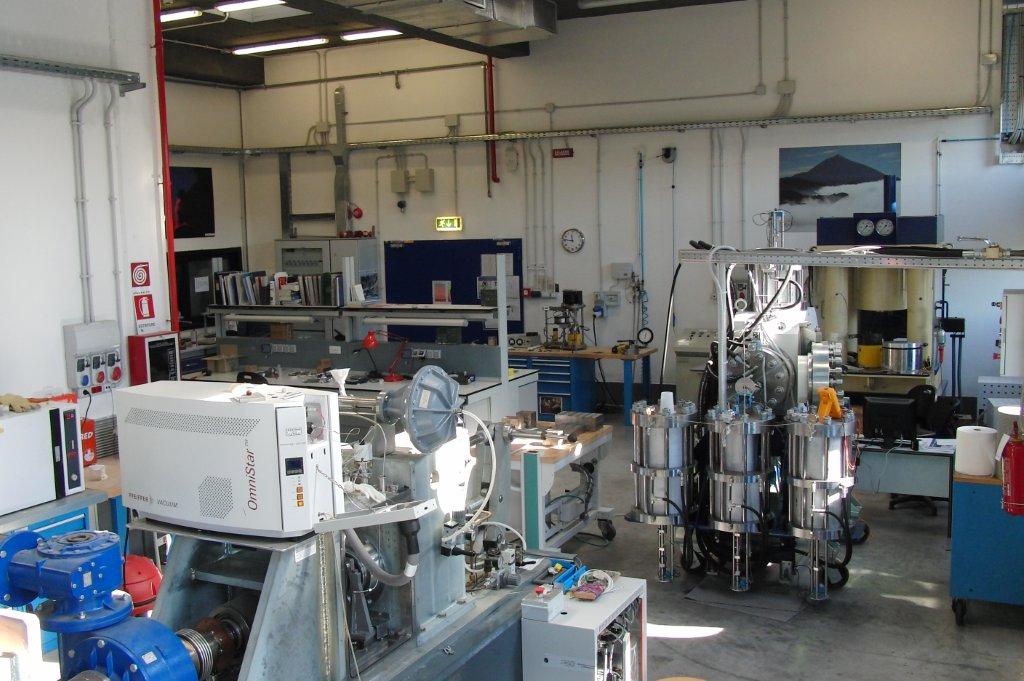
The INGV laboratories constitute an important infrastructural heritage and a pole of attraction for researchers and study groups from Italian and foreign institutions. In this sense, INGV has invested significantly
in technological innovation, in the commissioning and maintenance of state-of-the-art equipment, as well as in the experimentation and development of innovative analytical and experimental methods that can improve the quality and quantity of measurements, reducing acquisition and calculation and facilitating the usability of data for the entire scientific community. All these activities have been organized in the INGV in the form of workshops. The laboratory is therefore not only a physical place where the apparatuses are located and where analytical and experimental activities take place, but it is also a dynamic structure where, by producing technological and methodological developments, research activities are implemented and harmonized.
In the analytical and experimental laboratories of the Rome office, studies are carried out in the following sectors:
- Physics and chemistry of rocks
- Paleomagnetism and environmental magnetism
- Experimental petrology and volcanology,
- analog modeling,
- Geochemistry of noble gases, of stable isotopes of environmental radioactivity, and chemistry of fluids,
- Geology and geotechnology,
- Geomagnetism
- Radio frequency technologies of the Rome office,
- ULF-ELF-VLF technologies
- Microwave spectroscopy
- Environmental monitoring,
- Aerogeophysics
- Applied geophysics measurements,
- Site effects.
The laboratories of the Palermo Section mainly address the fluid geochemistry sector within the activities envisaged in the three Departments of Volcanoes, Earthquakes and the Environment, also providing support for the monitoring of active Italian volcanoes.
The activities carried out in the laboratories of the Pisa Section, of Napoli and Catania mainly address the volcanological and environmental sectors with particular attention dedicated to the study and characterization of the products of volcanic activity and magmatic processes. Furthermore those of the Vesuvian observatories and Etneo contribute to the monitoring and surveillance of volcanic activity through the analysis of erupted products.
- High Pressure Laboratory - High Temperature | Rome section 1
- Site Effects Lab | Rome section 1
- Seismic Reflection Laboratory “SismoLab-3D” | Rome section 1
- Our Labs | Section of Catania
- Geomatics and cartography laboratory | Vesuvius Observatory
- Our Labs | Section of Pisa
- Geochemical and Technological Laboratories | Palermo section
Geochemistry laboratories of fluids
- Laboratory of Geochemistry of Fluids | Rome section 1
- Geochemical and Technological Laboratories | Palermo section
Other Laboratories
- Laboratory for the development of submarine detection systems | Rome section 2
- Laboratory of gravimetry, magnetism and electromagnetism in active areas | Rome section 2
- Laboratory for computer networks, GRID and advanced computing
- Laboratory of new technologies and tools | Rome section 1
- Geology and Geotechnology Laboratory
- Development Laboratory for Geomagnetic Measurements
- Maintenance of the national geomagnetic network and development of new instrumentation for detecting the geomagnetic field
- Paleomagnetism laboratory
Logistics and equipment - Development Laboratory for Environmental Monitoring
- Development of instrumentation for various types of surveys of environmental geophysical interest
- Development Laboratory for Microwave Spectroscopy
Development and use of microwave spectroscopes for land-based measurement of atmospheric gases - Development Laboratory for Radiofrequency Technologies
- Maintenance and development of new RF instrumentation, for the study of the ionosphere and radiosonding of glaciers
- Optical Mechanical Laboratory
Maintenance, recovery and protection of historical and scientific patrimonial instruments - Environmental geophysics laboratory gDevelopment of instrumentation and techniques for geophysical exploration of the subsoil



